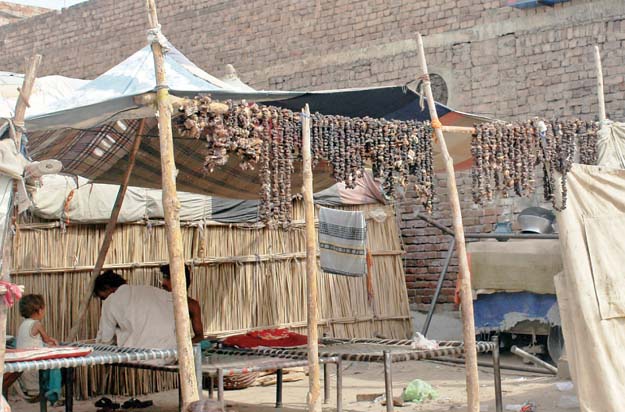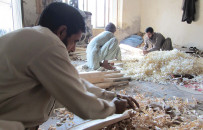Necessity breeds invention: Preserving meat in nomadic way
Women say the method allows their children to consume meat all year round

PHOTOS: FILE
Every year on Eidul Azha, Muslims around the world distribute the meat of sacrificial animals in three equal parts among their family, neighbours, friends and the needy. A large portion of the meat distributed to the poor is handed out to nomads who do not have a permanent residence and move from one place to another.
While meat can also be preserved by freezing it and canning it, nomadic women living in the outskirts of Multan use their own method to make sure that the meat lasts them until next year.
Sixty five-year-old Jindan Bibi, the matriarch of a twelve member family, states that it is difficult for nomads to afford meat whether it is chicken, beef or mutton.

“On Eidul Azha, my daughters, sons, daughters-in-law, grandsons and granddaughters all go door-to-door to collect meat. Over a span of three days, we collect around 80 kilogrammes of meat,” she maintains.
Because Jindan Bibi and her family do not access to refrigerators and electricity, they use an ancient technique of preserving meat, passed down from one generation to another.
The meat is preserved in three steps, the elderly woman explains. First, all of the meat is cut up into small pieces and strung together to form long strands. The second step is to boil the meat in salted water. Finally, the strands are hung up to dry in the sun.
“After we are sure that the meat is sufficiently dry, we store it in clay pots,” Jindan Bibi adds.
Khairan Mai, Jindan Bibi’s daughter-in-law, reveals that she learnt this particular method of preserving meat from both her mother and her mother-in-law.
We don’t have access to electricity and those fortunate enough to own refrigerators never allow us to store the meat for future use. However, this method allows our children to consume meat all year round, despite our sporadic lifestyle, she says.
“When the meat is boiled in salt water, all the bacteria and microorganisms responsible for decay are killed,” Khairan Mai explains.
Zubaida Bibi, another nomadic woman, claims that this method is the most common and the least expensive way to preserve meat. “In the week after Eidul Azha, nomadic woman work hard stringing together the meat and boiling it before it is hung up to dry. When the process is complete, the meat is then used as is normal and served,” she says.
Nomadic women add that this activity involves all the members of the family, not just the women. Since the method is extremely tedious and time consuming, the men lend a hand by hanging the strands of meat outside the hut at a height to avoid it being consumed by stray cats and dogs.
Bakhtawar Ameen Medical College Pediatrics Department Head Dr Hafiz Abdul Ghaffar clarifies that the method of preserving meat by salting and boiling it is completely hygienic and as nutritious as meat that is frozen or otherwise stored.
“Since the meat is half cooked, all the germs and the microorganisms are killed. However, care must be taken to protect the meat from bees and other insects.” If sterilised properly, it is perfectly safe for human consumption, he concludes.
Published in The Express Tribune, September 12th, 2018.



















COMMENTS
Comments are moderated and generally will be posted if they are on-topic and not abusive.
For more information, please see our Comments FAQ